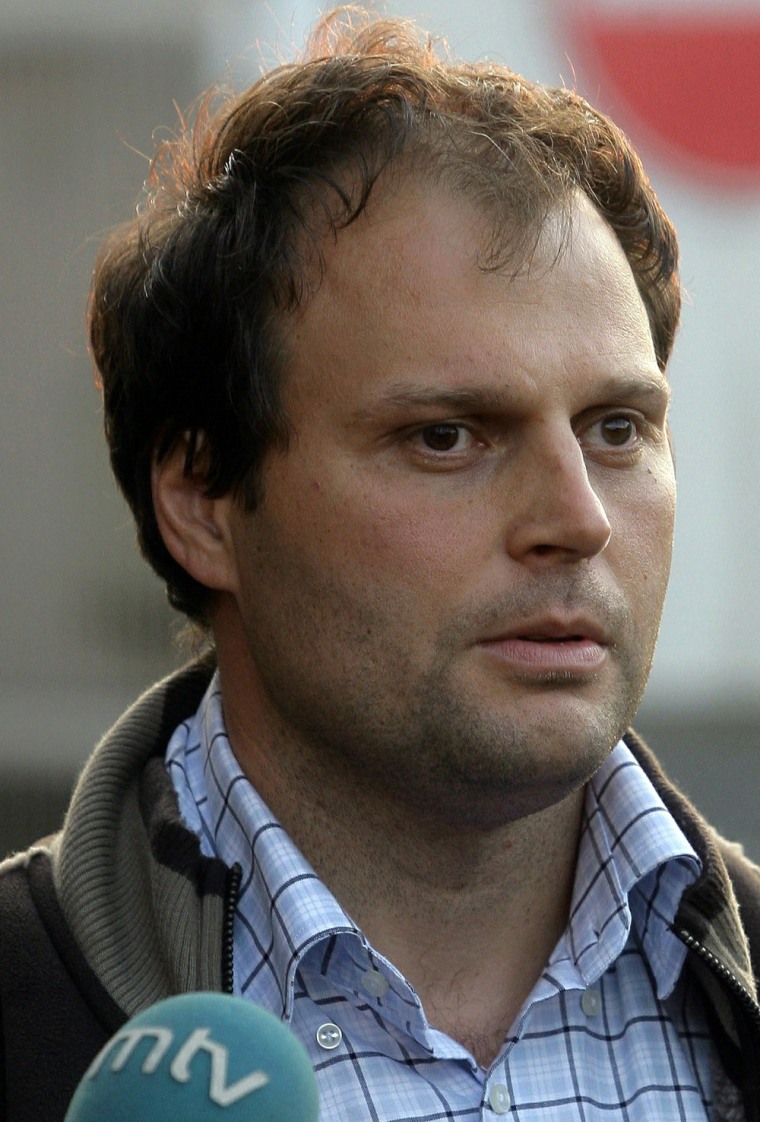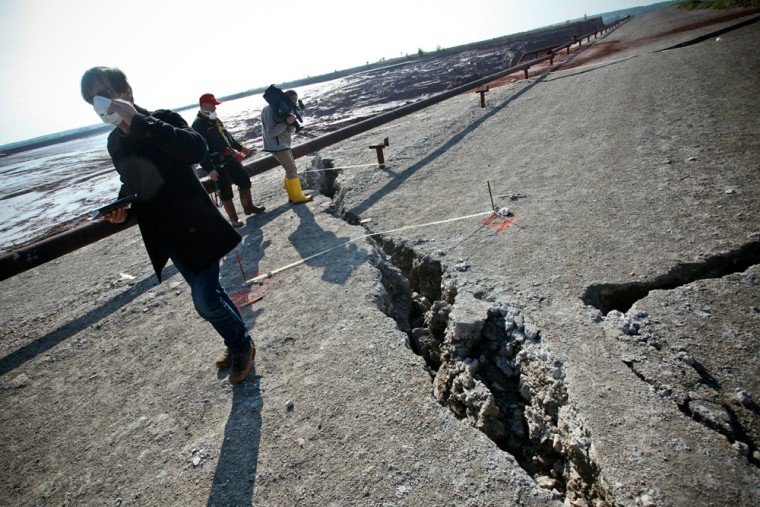Hungarian police have detained the director of the aluminum company responsible for a flood of caustic red sludge that killed eight people when it burst from its reservoir last week, the prime minister said Monday.
Police said they were questioning managing director Zoltan Bakonyi on suspicion of public endangerment causing multiple deaths and environmental damage.
Prime Minister Viktor Orban told parliament that the government wanted to take over MAL Rt., the Hungarian Aluminum Production and Trade Company, because the safe restart of production at the alumina plant was needed to save the jobs of thousands of workers.
Orban said his administration was also freezing the company's assets to ensure that funds were available to compensate for the damages caused by the disaster.
"Since this is not a natural catastrophe but the damage was brought about by people, the damages must be paid first and foremost not by taxpayers but by those who caused the damage," Orban told lawmakers.
Late last week, Bakonyi said that MAL Rt. had not noticed anything irregular at the site.
"The reservoir — which our men patrol daily — did not show any physical signs that something of this nature could happen," Bakonyi said.
Orban, however, said the government had other suspicions.
"We have well-founded reasons to believe that there were people who knew about the dangerous weakening of the reservoir wall, but for personal reasons they thought it wasn't worth repairing and hoped there'd be no trouble," Orban said.
Orban told parliament four things need to happen: Damages must be paid to those affected by the spill; jobs at the plant must be saved; those responsible must be held accountable; and further risks at the company's sites should be identified.
"Hungary's largest ecological disaster was caused by human negligence, by allowing a hazardous material to escape from a plant built and operated by people," Orban said.
"We need to bring the company responsible for the red sludge spill under state control, and its assets under state closure, until all of these four tasks are handled," he told parliament.
On Sunday, MAL Rt. said it was willing to pay compensation "in proportion to its responsibility" for the damage caused by the deluge.
In Devecser, one of several towns hit by the flood a week ago and where many people are employed at the alumina plant, Bakonyi's detention was met by mixed feelings.
"Someone surely has to be held responsible, but he wasn't here when the reservoir was built so he can't carry all the blame," 56-year-old caterer Maria Kiss said. "I never heard any of the plant workers complain about him."
The body of the flood's eighth victim, an elderly woman, was found Monday afternoon near Devecser. The woman was the last person reported missing.
In Kolontar, the town closest to the damaged storage pool, which is 25 acres in size, construction continued of a new containment wall to protect the area in case of a new flood.
The wall — 610 yards long, with an average height of 8.8 feet — was being built of dolomite rock and clay, the National Disaster Management Directorate said.
It is intended to be sturdy enough to protect the unaffected parts of Kolontar, from which more than 700 residents have been evacuated, as well as towns farther from the reservoir, like Devecser, in case of another flood.

Last week's sludge spill flooded three villages in less than an hour. Fifty people are still hospitalized, several in serious condition. About 184 million gallons of the sludge was released.
The damaged reservoir still contains 3.2 million cubic yards of sludge, but it no longer has a large layer of water on top, so any new spills are expected to move slower and travel less distance — probably no more than about a half-mile — than the first one did.
Environmental State Secretary Zoltan Illes said additional risks were centered on a reservoir next to the damaged one, which contained 26.4 million gallons of caustic liquid.
Authorities fear that if the cracks on the broken reservoir's northern wall continued to widen and the wall falls, the second storage pool could also break, releasing a caustic flow.
Illes said the new wall in Kolontar — which will be permanently incorporated into the town's landscape, with a bike path planned on its ridge — would withstand a flood even if the second reservoir burst.
Measurements taken in the past 24 hours showed no further movement of cracks on the northern wall, which experts have said is bound to collapse.
Health authorities warned the local population, as well as cleanup and construction crews, that the amount of red sludge dust in the air exceeded safe limits and said protective gear should be used.
In a statement on its website on Sunday, MAL said the walls of the reservoir met the prescribed rigidity standards, based on the findings of a technical survey carried out in 1995.
However, Gusztav Winkler, a professor at Budapest Technical University, who surveyed the site when the reservoir was being built 30 years ago, told Reuters the structure of the soil made the reservoir unstable.
